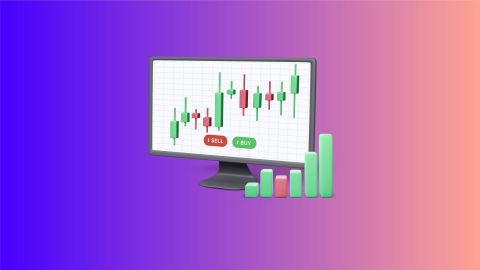Learning how to identify trend reversals and breakouts is one of the most important aspects of technical analysis. While candlestick patterns are generally used to identify these points, you can also rely on certain graphical patterns, like the golden cross. If you are a short-term or medium-term trader eager to leverage immediate market price changes, you need to know the meaning of the golden cross, when it is formed and how to trade this pattern.
Let us take a closer look at these key details.
What is the meaning of the golden cross?
The golden cross is a line chart pattern that involves two moving averages (MAs) across different timeframes. The MAs can be simple or exponential. The pattern occurs when the short-term simple or exponential moving average crosses the long-term moving average from below.
Although both types of moving averages can be used, seasoned traders prefer to rely on the exponential moving average because it is more sensitive to recent changes in price. However, tracking the simple moving average can also help you identify the golden cross.
What the golden cross tells you?
When a short-term MA cuts across a long-term MA from below, it essentially indicates that the short-term moving average is moving faster than the long-term moving average. In other words, it means that the price of the stock or security has been rising rapidly in recent trading sessions. This signals strong bullish momentum.
By studying the price graph chart, spotting the golden cross and confirming the bullish price trend with other indicators like volume in the stock market, you can ascertain if it is a good time to take a long position.
How to identify a golden cross?
To identify the golden cross in the stock market, you need to look into the following aspects and metrics:
- Moving averages: You need to track two moving averages to identify if a golden cross has formed. These two MAs should be related to vastly different timeframes. The 50-day MA and the 200-day MA are commonly used to identify a golden cross on the price chart.
- Crossover: The MA crossover is another vital sign to keep an eye out for. The short-term 50-day MA should be trending upward in the sessions leading up to the golden cross. However, it must then cut across the long-term 200-day MA from below.
- Bullish signal: The crossover acts as a bullish signal for traders. It means that traders eager to enter the market may find it a suitable price point to initiate a trade. Meanwhile, traders who have a short position open may need to close their trade before the price rises further.
- Strength of the move: Merely observing the golden cross is not enough to make a bullish move though. The signal should be strong and confirmed. You can use a combination of different indicators like the trading volume, Relative Strength Index (RSI), Moving Average Convergence Divergence (MACD) and even candlestick chart patterns to confirm if the golden cross is strong or a false signal.
The three different stages of a golden cross formation
To further understand the mechanics behind the golden cross, check out the three stages of its formation and confirmation.
The first stage: Weakening downtrend
The first stage is before the golden cross forms — when the prevailing downtrend is growing weaker, and the prices are consolidating or losing downward momentum. This indicates that sellers are losing control over the price, and buyers are starting to enter the market.
The second stage: New uptrend
The next stage occurs when the buyers gain dominance. This is when the MA crossover occurs, leading to the formation of the golden cross. It means that the buyers have the upper hand and are driving the price upward.
The third stage: Continuation of the bullish trend
A sustained bull run is the third stage in the golden cross, which is represented graphically by the short-term MA continuing to trend upward. This should typically be backed by a high trading volume and strong bullish momentum.
How to trade the golden cross?
To initiate or close a trade when you spot the golden cross, you need to know the price points for trade entry, trade exit and stop-loss limits. Here are some pointers to help you trade this bullish pattern.
- Trade entry: The ideal time to initiate a long position is when the short-term MA crosses over the long-term MA. This is when the bull run is expected to begin. However, if you want a more conservative approach, you can always wait for another session to confirm the upward trend.
- Take-profit: The target price should be set at a previous high that the price reached before the formation of the golden cross. If the previous trend was bearish, you can use candlestick patterns to identify target prices more accurately. Alternatively, you can also use your preferred risk-reward ratio to set a take-profit limit.
- Stop-loss limits: A stop-loss limit is crucial for any trade because it protects your capital from any downside risk. In a trade based on a golden cross, you can set the stop-loss price below the most recent swing low or even use the long-term MA in the pattern as your stop-loss limit.
Golden cross vs death cross
The death cross pattern is the opposite of the golden cross. Here, a short-term MA crosses a long-term MA from above and continues to move downward. This signals a downward trend and a potential bear market in the next few trading sessions. The take-profit levels and the stop-loss levels for trades initiated based on the death cross will be the opposite of those made using the golden cross.
Conclusion
The golden cross is easy to spot on a price graph chart even if you are a beginner to the markets. All you need to do is understand how moving averages work and why a crossover of this kind may mean a bull run is imminent. That said, false signals are common in the market, so ensure that you always confirm any pattern you notice with other technical indicators and set stop-loss limits in case the market moves in the opposite direction.




